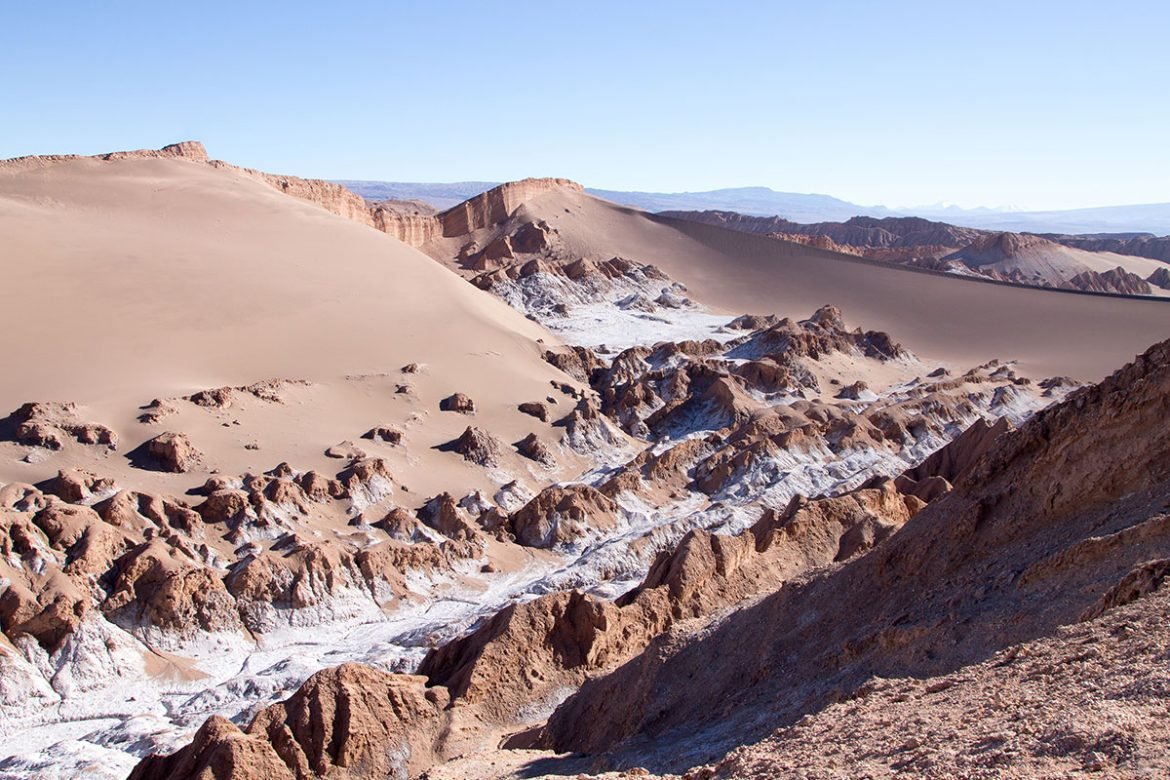Chile is the longest nation in the world and is located between the Andes and the Pacific. The widest point is around 112 miles (180 kilometers), yet the shoreline stretches over 4,300 kilometers (2,672 miles). Chile is home to several active volcanoes in the Pacific’s so-called “ring of fire,” as well as the world’s driest desert and breathtaking glaciers and fjords.
10. Cerro San Cristobal
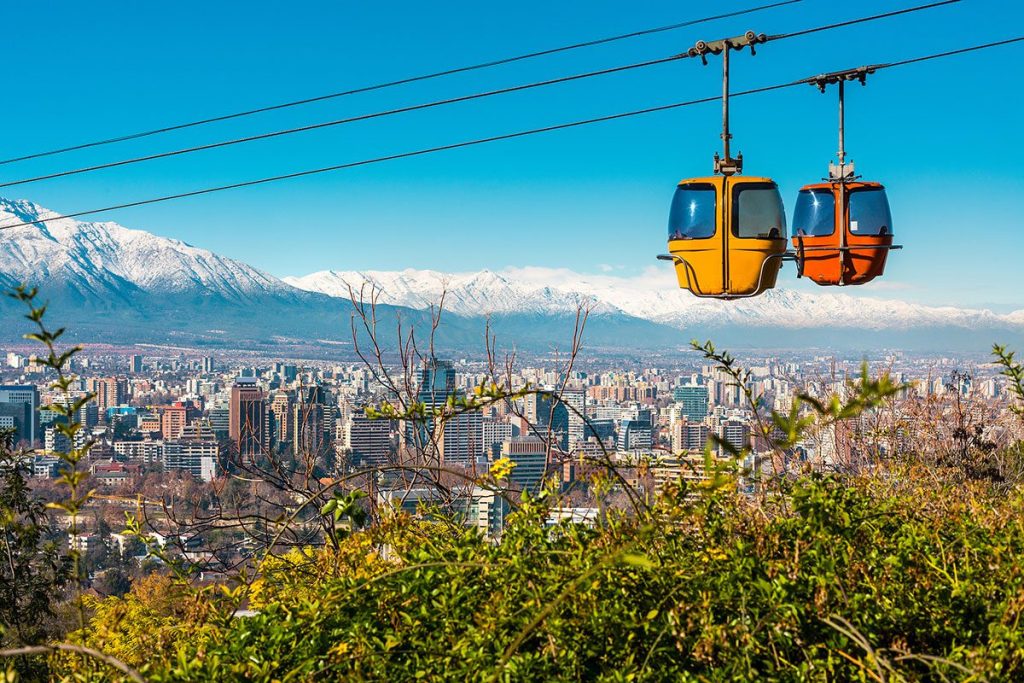
A scenic view of Santiago de Chile from a cable car ride in San Cristobal hill. Image source: Jose Luis Stephens/Shutterstock.com
There is a hill in northern Santiago called Cerro San Cristóbal from which you can see the city and, on a clear day, the Andes. At the top, there is a church and a 22-meter-tall (72-foot-tall) statue of the Virgin Mary. The peak is accessible via cable car or a strenuous trek. Parque Metropolitano, the biggest park in Santiago, is located on Cerro San Cristóbal. The park has a zoo, two pools, and a botanical garden.
9. Los Pinguinos Natural Monument
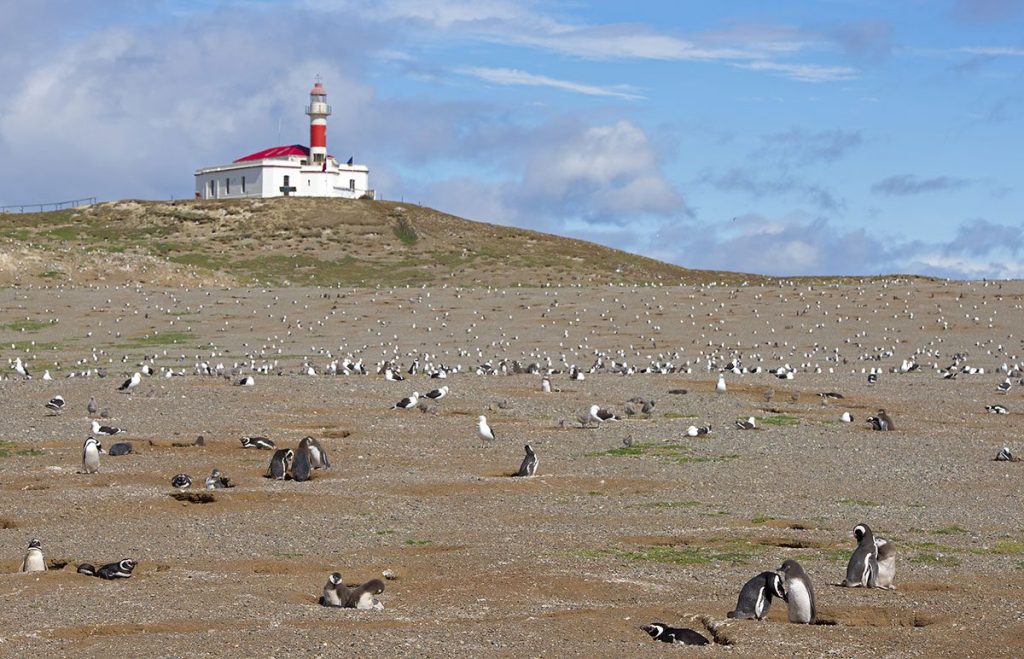
A colony of penguins on Magdalena Island in Chile. Image source: longtaildog/Shutterstock.com
Located in southern Chile, Los Pingüinos Natural Monument is home to one of the biggest penguin colonies in the world: around 120,000 Magellanic penguins. It is located 35 kilometers (22 miles) northeast of Punta Arenas, on the tiny island of Magdalena, which is just one square kilometer in size and has a lovely red lighthouse at its peak. The birds return annually in late September or early October to mate. The penguins usually go back out to sea around the end of March.
8. Chiloe Churches
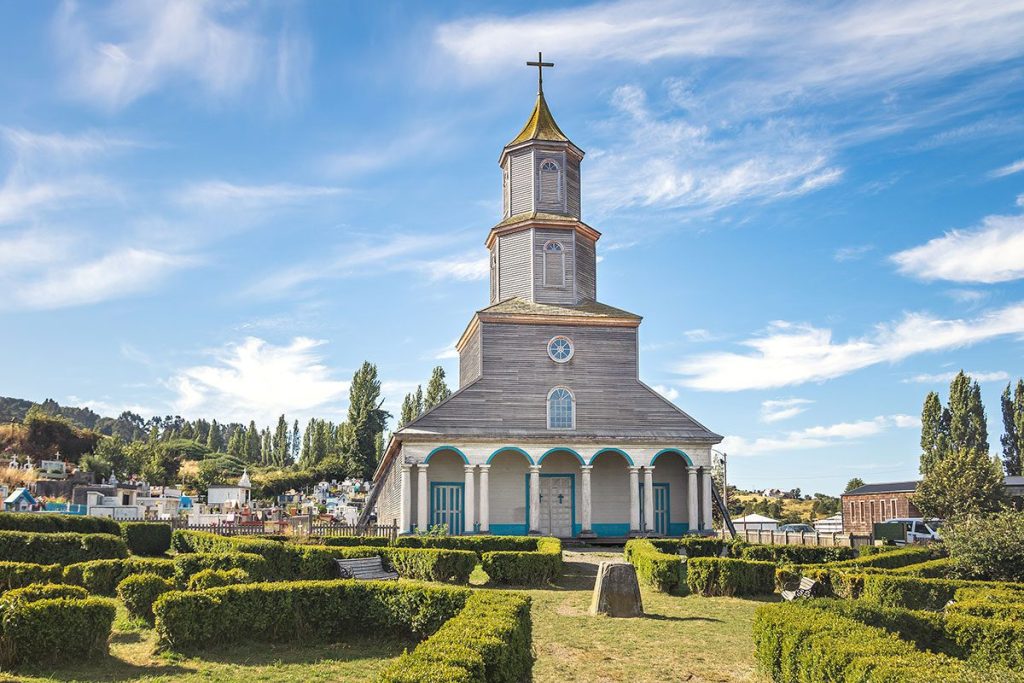
The beautiful Nercon Church in Castro, Chiloe Island, Chile. Image source: Diego Grandi/Shutterstock.com
Chiloe is a series of islands in Chile, and its distinctive Chilota-style churches have brought it international attention. More than a hundred wooden churches on these islands were built in the seventeenth century, and they all exhibit this distinctive architecture, which is a synthesis of indigenous and European Jesuit influences. The churches had fallen into disrepair, but over two dozen have been restored to their former glory and provide stunning examples of the distinctive mestizo architecture.
7. Valparaiso
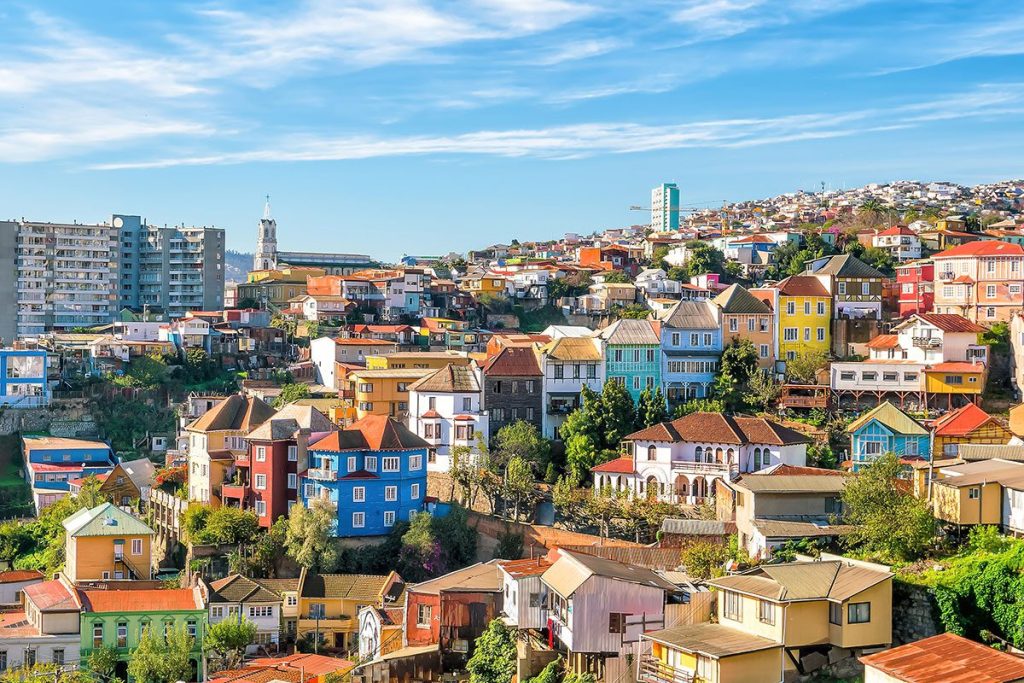
The UNESCO World Heritage city of Valparaiso, Chile, known for its colorful buildings. Image source: f11photo/Shutterstock.com
Valparaiso, in central Chile on the Pacific coast, is famous for its multicolored homes, bohemian vibe, and scenic ocean vistas. Valparaiso is a city in Chile that has a rich architectural and cultural heritage and is built into the slopes of hundreds of hills facing the Pacific Ocean.
6. San Rafael Glacier
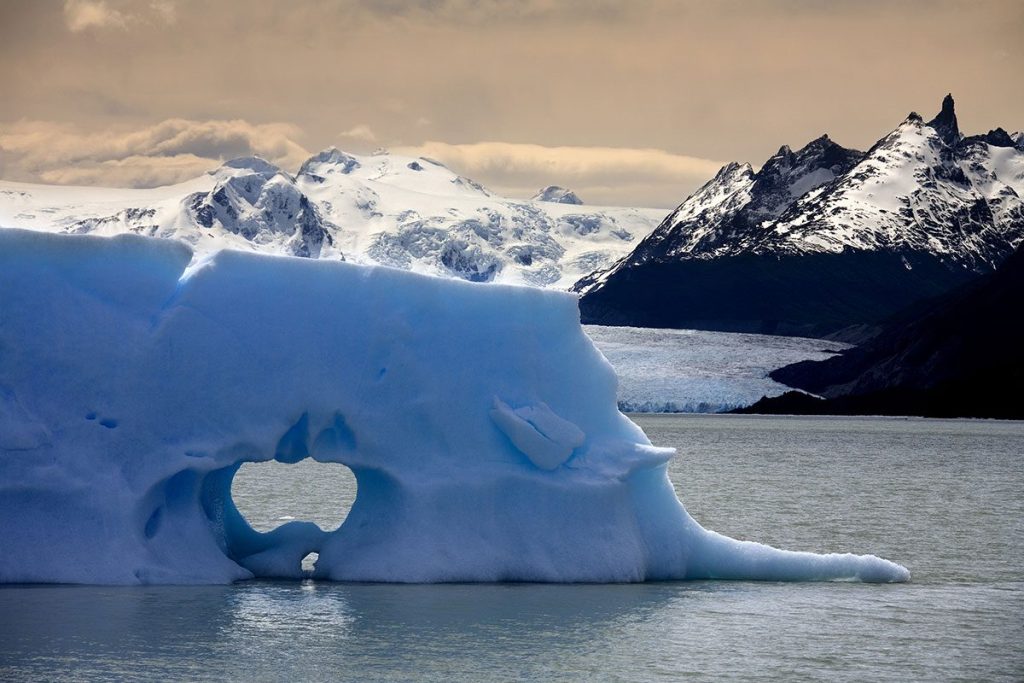
The stunning San Rafael Glacier in Patagonia, Chile. Image source: Steve Allen/Shutterstock.com
The San Rafael Glacier is a massive glacier that flows into Laguna San Rafael in California’s Laguna San Rafael National Park. Only by boat or aircraft can you reach the glacier. Taking a boat across the winding waterways of the remote Aisén area is an experience in and of itself. The glacier continues for another 15 km (9 mi), so what you see from the boat is just its terminus.
5. Valle de la Luna
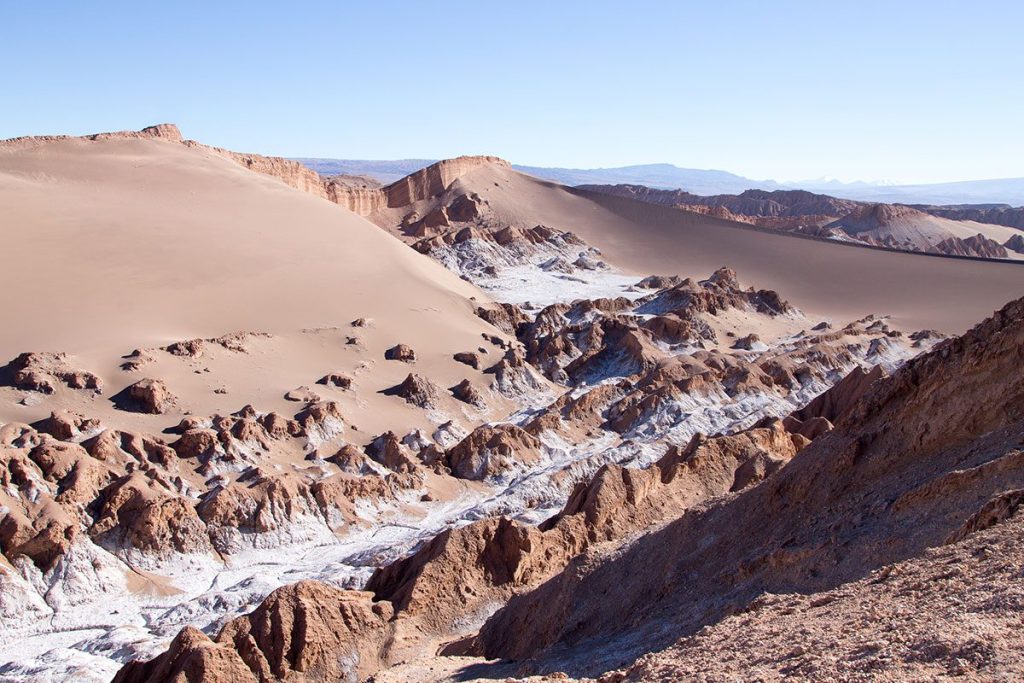
breathtaking landscape of the Valley of the Moon in the Atacama Desert in northern Chile. Image source: elleon/Shutterstock.com
In the middle of the Atacama Desert is where you’ll find Valle de la Luna. The sand and stone in this area have been shaped by the region’s weather for ages, creating a beautiful desert environment. The name, which means “Valley of the Moon,” comes from the way the area’s enormous sand dunes and stone formations seem like the moon’s surface.
4. Torres del Paine
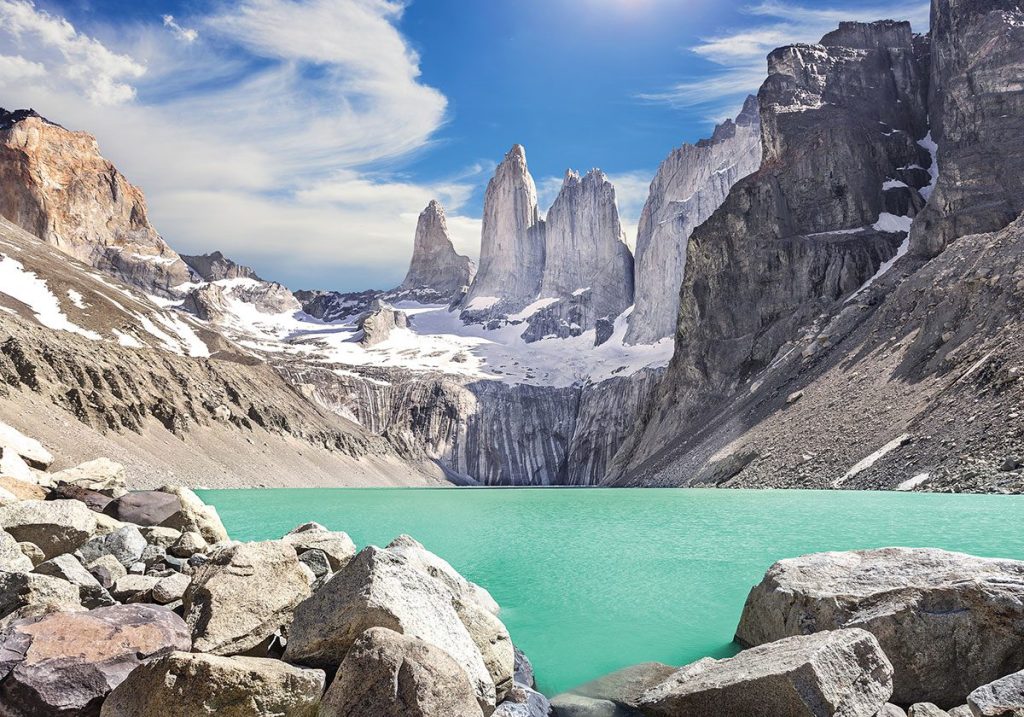
Torres del Paine mountains, located in the Patagonia region of Chile. Image source: Maciej Bledowski/Shutterstock.com
Located in Chile’s Patagonian Extreme South, Torres del Paine National Park is a stunning natural area known for its imposing mountain peaks, crystal clear lakes, and pristine glaciers. The three majestic granite peaks known as the Towers of Paine were sculpted by glacial glaciers and serve as the park’s namesake and focal point. Around 2,500 meters is the height of the tallest summit (8200 feet).
3. Pucon
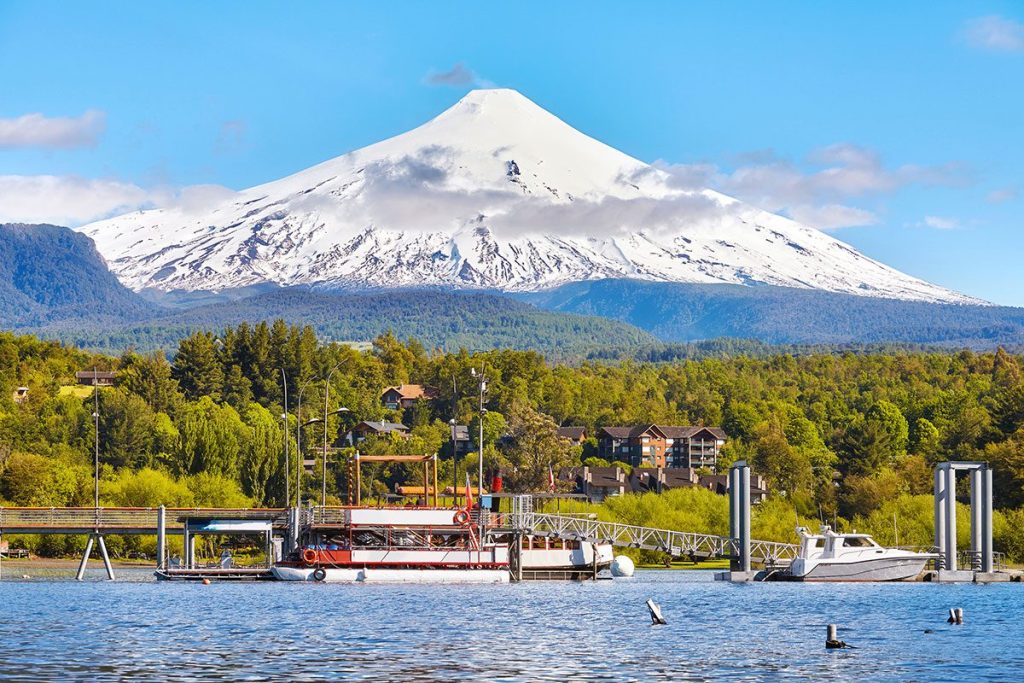
Villarrica Volcano in southern Chile, one of the most active volcanoes in the country. Image source: Maciej Bledowski/Shutterstock.com
Located in the heart of the southern Lake District, Pucón is a charming little tourist town. It is one of the most visited places in Chile because of its unbeatable setting between a picturesque lake and a towering volcano. Water skiing, snow skiing, white water rafting and kayaking, horseback riding, natural hot springs, and hiking up the Villarrica volcano are just some of the sports and entertainment options available in Pucón.
2. Lauca National Park
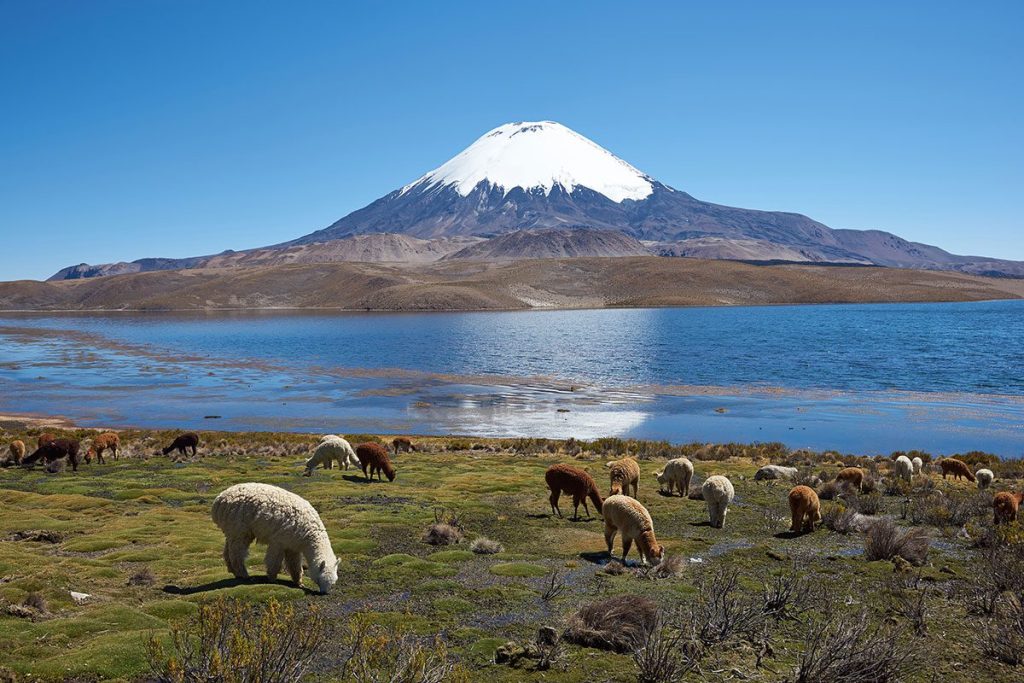
the tranquil Lake Chungara in the Altiplano of northern Chile. Image source: Jeremy Richards/Shutterstock.com
Among the most popular destinations in Chile, Lauca National Park can be found in the country’s extreme north, among the Andes Mountains. One of the world’s tallest lakes, the stunning Lago Chungará is Lauca’s most impressive natural wonder. Volcán Parinacota, a dormant volcano, towers above it with its impossibly flawless cone. Its twin, Volcán Pomerape, is located on the Bolivian side of the border.
1. Easter Island
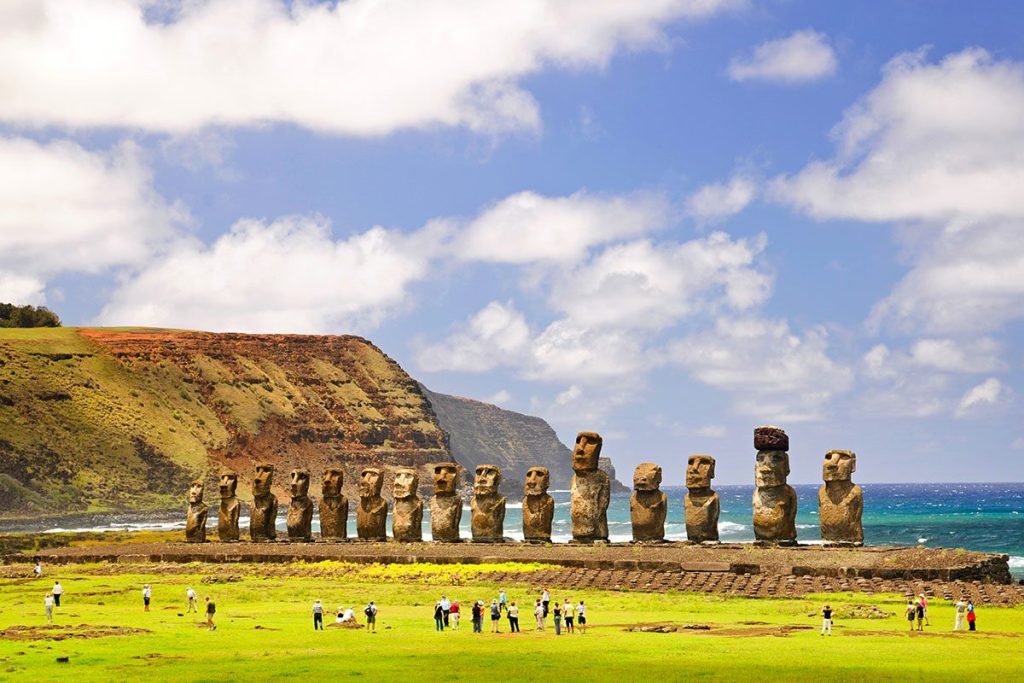
the iconic Moai statues on Easter Island, located off the coast of Chile. Image source: Amy Nichole Harris/Shutterstock.com
Easter Island, in the southeastern Pacific Ocean, is one of the most remote inhabited islands on the planet. It is technically a part of Chile, yet it is located thousands of miles from the shore, around midway between Chile and Tahiti. The ancient Rapanui inhabitants of this island are credited with constructing 887 enormous sculptures known as moai. The moai have attracted so much attention that they have, rather predictably, eclipsed the island’s other sights. There are two active volcanoes and a number of sandy beaches on Easter Island, making it an excellent destination for those who like diving or surfing.


